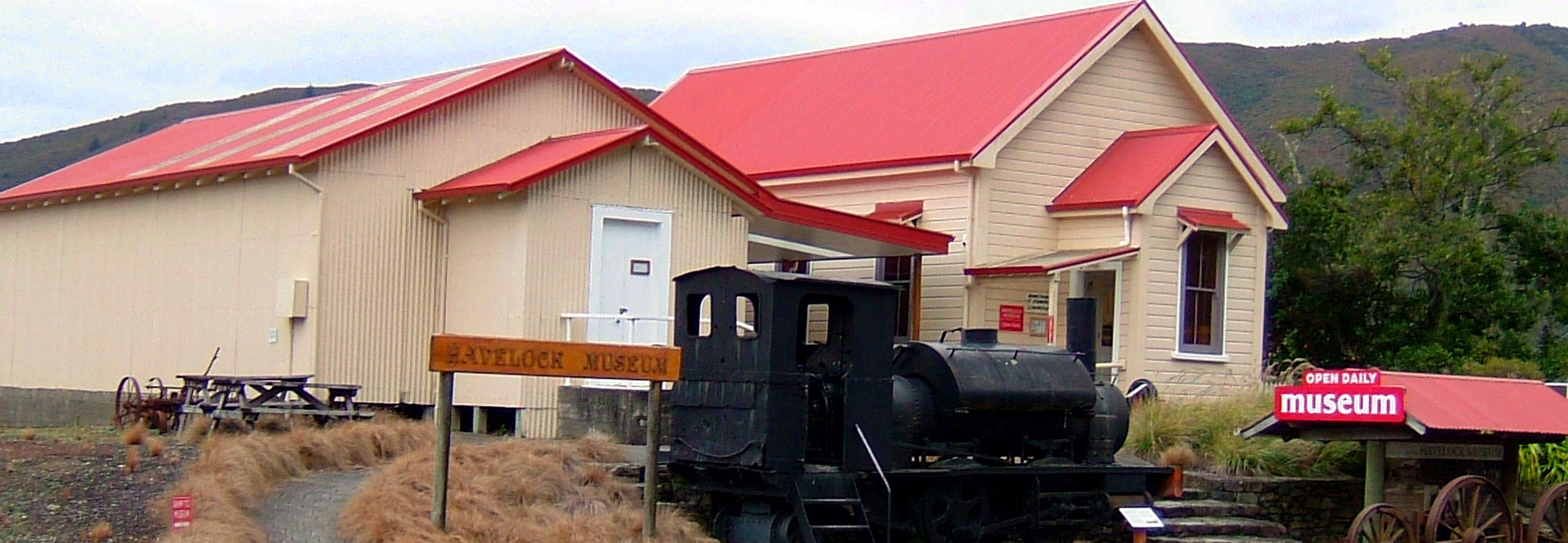A Brief History of the Havelock Museum.
The Havelock Museum was established in 1973. Its formation was encouraged by Norman Brayshaw, who with the Lions Club of Havelock, arranged for the use of the disused Methodist Church of St. John to be used for the display of articles of local interest. Items were collected from around the area, and a display, largely centred on the saw-milling industry was opened to the public.
The members of the Lions Club cared for the museum for many years, but in the mid 80's the Church wished to sell the property, and it was purchased by the local body as a probable site for a future town hall or other civic amenity. Soon after this, the Lions Club found that it was not able, due to other commitments, to continue caring for the museum, and the Museum Society was formed, largely due to the hard work and practical assistance of Mr. Jack Shand.
The development of the museum had been delayed as the site was actively considered suitable for the establishment of a retirement settlement, which jeopardised the society's tenure of the building. This scheme was eventually abandoned, and early in 1992 the Society received the title of part of the section, containing the museum building.

The church was not only a religious focus but a strong part of the family life. In the 60's the church closed as people moved from the area. It lay disused, forlorn and it seemed forgotten. The Methodist Trust handed it to the Blenheim Methodist group.
The church building was ideal for a museum in that it had links with Havelock's earliest beginnings when the Brownlee's milled the forests of the Kaituna, Pelorus and Rai Valleys and provided the economic impetus for the thriving stagecoach town and port service centre. It was constructed from locally milled rimu from Brownlee's mill with matai used in flooring.
Jack Shand Building
In the winter of 1992 the Havelock Suburban Hall was donated to the Museum by Mr. Jack Shand to be used as a support building. The Hall was built at a cost of £100-10-01 by Neil Wratt and assisted by Doug Coward and the local settlers who gave voluntary labour. It was opened on 6th December 1938.
The flooring used was Matai at a cost of 25 shillings per 100 feet.
The Hall was the focal point of the Havelock Suburban Valley and was used for farmer's meetings, church services, dances, social gatherings and birthday celebrations.
During World War 2 the Hall was used for fundraising and the ‘send off' and ‘welcome home' for the Havelock Suburban servicemen.
From when it was first opened the Country Women's Institute held their monthly meetings there. 
Read the Havelock Story



